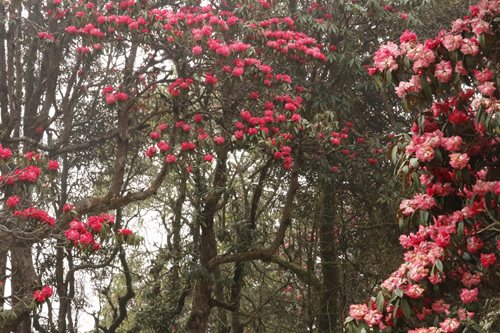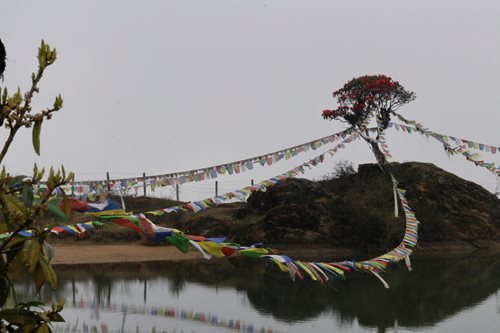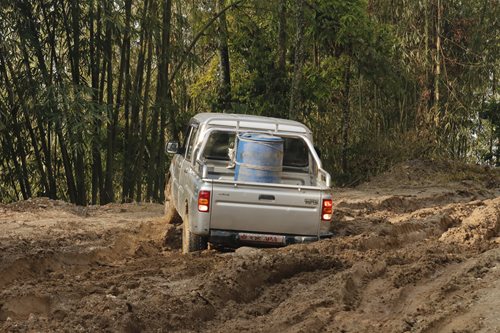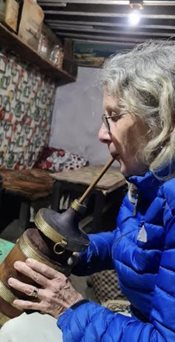When folks hear of the timescale we’ve been visiting Nepal over, they often say, ‘It must have been amazing back in the 70s / 80s / 90s.’
It was, and it still is.
This month we set out on a bit of a final tour, visiting and revisiting places Simon knew well from his five years working in East Nepal before there were any roads. This time we drove up to about 3000m to the hamlet of Gupha Pokhari. Pokhari means a tarn and gupha means cave, and some say the name comes from the dank, drippy, almost subterranean atmosphere because the place is often enveloped in cloud. Another local told us that there is a secret cave and also an ‘amazing hole’ where you can drop a stone and hear it rattling away far, far away.
Simon and I first came here together in 1988, on foot, during the monsoon. We slept in a bamboo shack packed in together shoulder-to-shoulder with other travellers, most of whom were porters carrying salt, cloth, corrugated iron, biscuits, soap and other essentials. The roof leaked and I had to wriggle around to avoid getting drips in my face or in an ear. We picked up fleas and candles didn’t last long because the mountain breezes made them gut and dribble.
 |
| This part of Nepal boasts 28 species of rhododendron |
 |
| Gupha Pokhari in the mist, but resplendent with prayer flags and rhododendrons |
As we walked Simon helpfully kept pointing north, remarking often on how normally you’d be able to enjoy a wonderful view of Kanchenjunga and Makalu himals. The flowers and birds and butterflies were impressive, but mostly it felt as if we were constantly walking in or just under cloud. There were no Himalayan views.
We returned to Gupha Pokhari in the spring of 1998, this time with our boys but still on foot as part of a month-long trek towards Kanchenjunga base camp. We arrived in thick cloud and camped by the pokhari at the top of the ridge where our sons helped feed a yak calf and various pigs, which were already drunk from eating left-over fermented millet (but I’ll say more about that later). There was a terrific storm in the night and when we unzipped the tents in the morning the skies were clear, and much to the excitement of the kids, the ground covered in hailstones so the scene was white. And we were treated to a fine Himalayan panorama framed by sinuous rhododendron trees.
Now, early in April 2022 we were back joining mainly local tourists who had driven up from the lowlands to enjoy the spectacle of whole mountainsides resplendent in rhododendron blossom – trees some over 5m tall decorated in shades of reds and pinks. Victorian plant-hunters brought some to the UK but this being a centre of diversity for rhododendrons there are many more than you’ll see in any British garden: they come in deep red, dark pink, lilac, white – 28 species in all.
 |
| Roads can be challenging, even with 4-wheel-drive, especially if it has rained |
Little did we know when we walked here over many days that one day we’d drive and even three-wheelers make it some of the way. The mysterious mists weren’t great for photography and it made us want to huddle inside as soon as the sun set, enjoy electric lighting and a warming, intoxicating slurp of fermented millet in a big wooden tongba. We appreciated beds (albeit with centimetre-thick mattresses) and being able to s

witch on a light when going out to the loo. The system of roads means that shops are well-stocked and people can buy medicines or reach medical help when needed. Life is easier, more hygienic and the Himalayan views are still awesome, even if, perhaps, people like us who don’t earn the views by spending time and expending energy to reach the best viewpoints don’t always get to enjoy that treat.
But there's always a warming, intoxicating tongba on offer, as compensation.